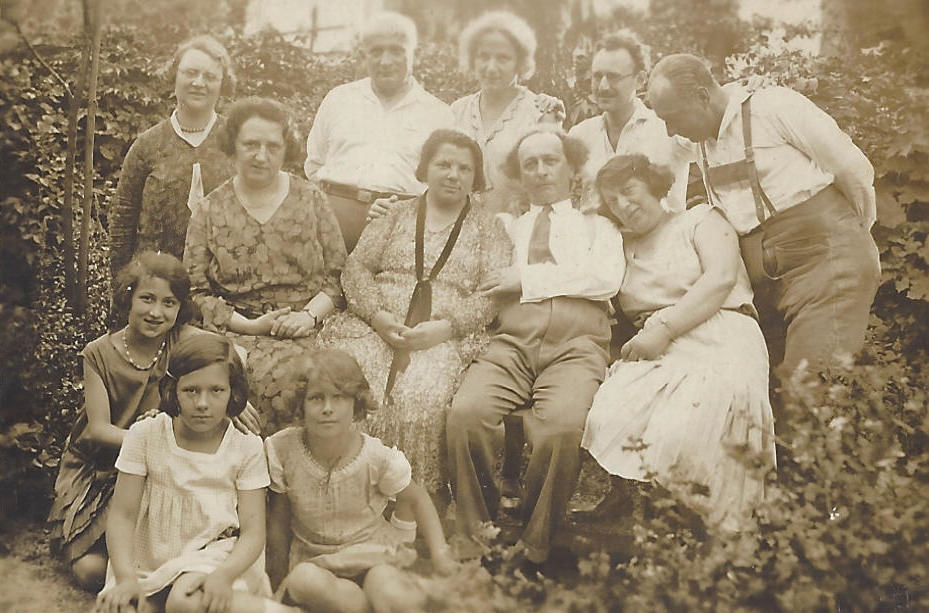
YS: If you were to choose a family object for the exhibit, which object would it be?
MT: I chose a family photo taken in Vienna in 1931.
YS: Why did you choose this object? What do you associate with it?
MT: This is one of several photos my mother left me of happy gatherings of the extended family in Vienna. My mother, 11, is squatting at the left side of the photo, the one with the necklace. Her mother sits on her left, and her father stands to the left of her mother. The others are various relatives: sister, brother-in-law, aunts, uncles, and two cousins the same age as my mother sitting in front of her. I chose this photo because it depicts how very important family was and how happy they were to be together. It makes me think of Jause, the Viennese tradition of family gatherings for coffee and cake and togetherness. It brings back fond memories of our own family’s weekly Jause in New Jersey when I was a child.
YS: Where did your family live before the Holocaust and where do they live nowadays? Could you please briefly explain the most important stations in the family history?
MT: My mother grew up on Liechtensteinstraße in Alsergrund. My father grew up on Dresdner Straße in Brigittenau. They didn’t meet until 1942 in New York City. Our family now is spread all over the world: Seattle, USA; Ontario, Canada; Westchester County, USA; San Diego, USA; Carcassonne, France; Cass Bay, New Zealand; North Carolina; Brazil; Italy; Hungary; Netherlands; Japan; Czech Republic; South Africa; Germany.
My mother was sent to England by her parents shortly after the Anschluss of Austria in 1938. Her parents fled from the Nazis to Shanghai in 1940 and to Manila in 1941, only to be caught in the Japanese occupation of the Philippines and stuck there until the end of World War 2 in 1945. My father’s family was deported to Hungary shortly after the Anschluss. All of them but my father escaped to Wales just a few days before Germany invaded Poland and the United Kingdom declared war on Germany in 1939. My father fled to Santo Domingo in 1940 and immigrated to New York just ten days before Pearl Harbor was attacked in 1941.
YS: How does your family´s survival story and the Holocaust continue to influence you today?
MT: I am obsessed with stories of my family’s escape and their lives in the 1930s and 1940s, together with the stories of all the more distant relatives who were not lucky enough to escape. So much so that I have written a manuscript about all these family stories and continually try to uncover more.
